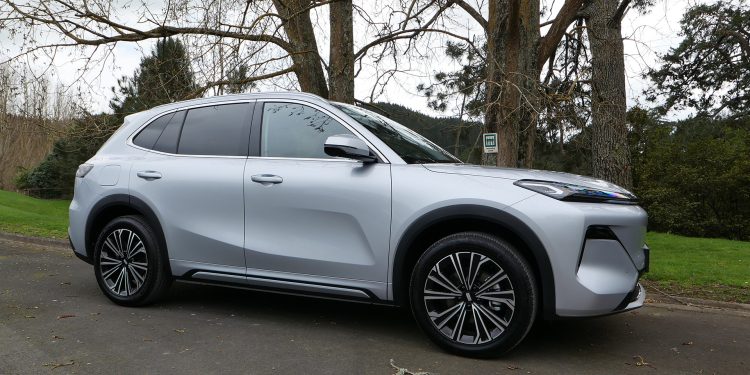First Drive: Geely Starray EM-i and Riddara R6
Words/Images Peter Louisson
Geely Auto has launched in New Zealand under the NordEast banner. Its first product in New Zealand, the midsize electric EX5 has been on sale for a while. Now it has a new sibling with a PHEV drivetrain (Starray EM-i).
NZ Autocar drove both on the recent media launch. Put simply, if you want oodles of non-stop rural running without range anxiety and fancy EV tootling in town, choose the Starray. For those after zero emissions only, and not needing as much range, opt for the somewhat quicker, slightly more expensive EX5. Drivetrains aside, they’re otherwise quite similar. Both, bar a few software annoyances, are seriously competitive, especially for the price.
NZ’s first proper electric ute
Meantime, we also got a shot at driving New Zealand’s first proper electric ute, both on and off road. Known as Geely Riddara – it’s Geely Radar in China – the ute model is the RD6.

This is unusual in ways other than being the first properly decent electric ute to dot down here. It uses the same GEA platform as the other two newcomers so isn’t a body-on-frame ute. It also features coil springs at the rear.
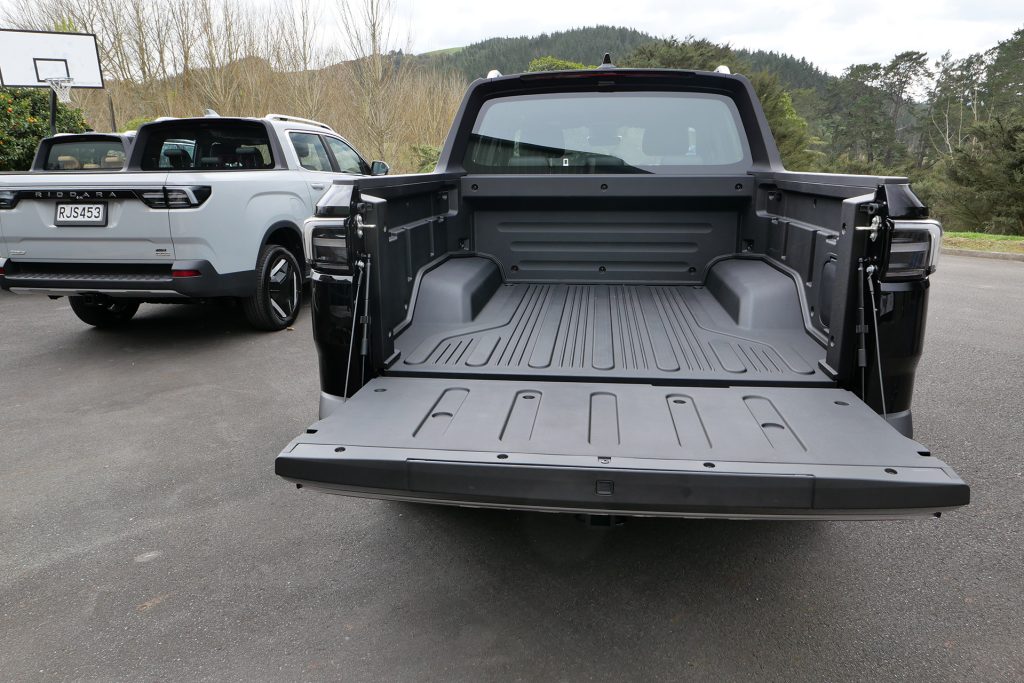
RD6 is 5.2m long, has a payload of 1030kg and can tow up to 3000kg braked loads. That no doubt will crucify its range (360km from its 76kWh pack). But we doubt many will bother with anything other than a light trailer.
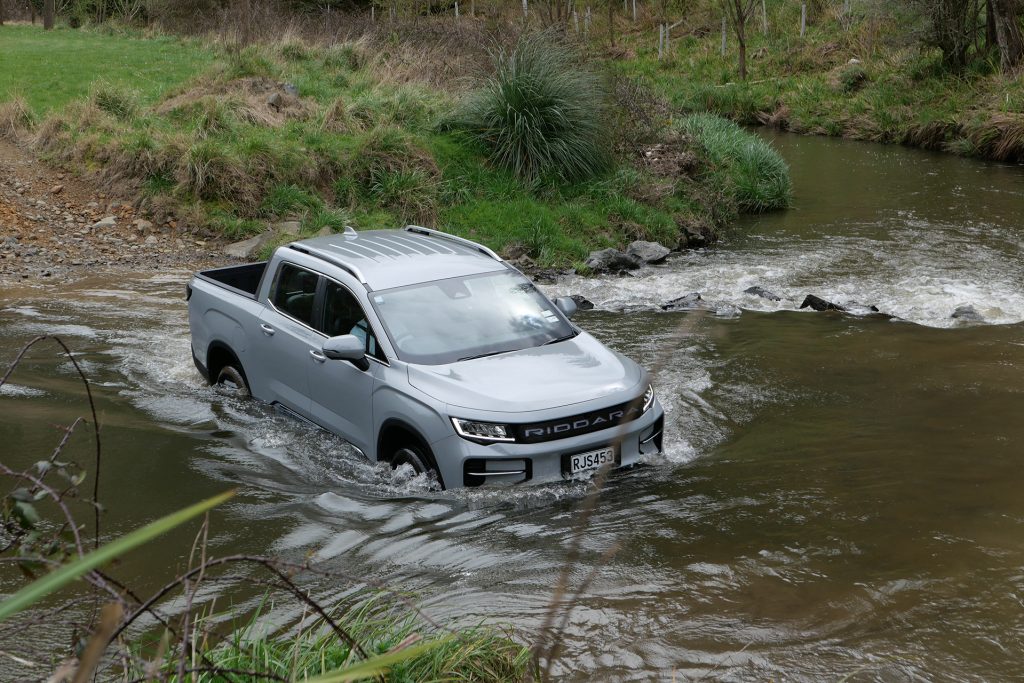
On road it feels way more car-like in its ride and handling than any ute we’ve ever driven. It is streets ahead, truly. And with dual motors and 315kW of power total, it will blow away almost all other utes in a sprint race. Certainly amongst those under $100k. Its bold claim is 0 to 100 in 4.3sec. It didn’t feel quite that quick to us but even so it will still murder comparably priced ICE utes.
Some geezer in a Subaru Impreza going for it on a back road must have been surprised when the RD6 filled his rear view mirrors. Because it hangs on better than other utes in the corners, rides totally without jiggle, and has great brakes to counter that strong EV headlong rush.
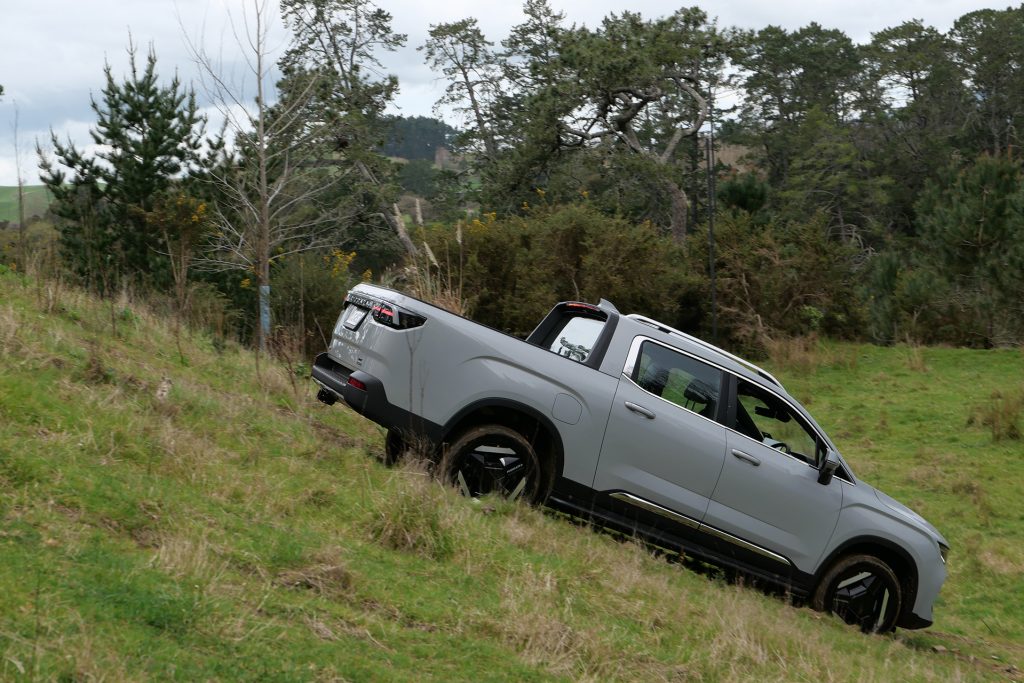
We should also mention it is well capable off road with AWD, 815mm of wading depth, and a variety of terrain modes. We just set it in the more general ‘off-road’ mode and took it through river crossings, and on some steep ascents and descents. Not a foot out of place and great traction, all on standard tyres.
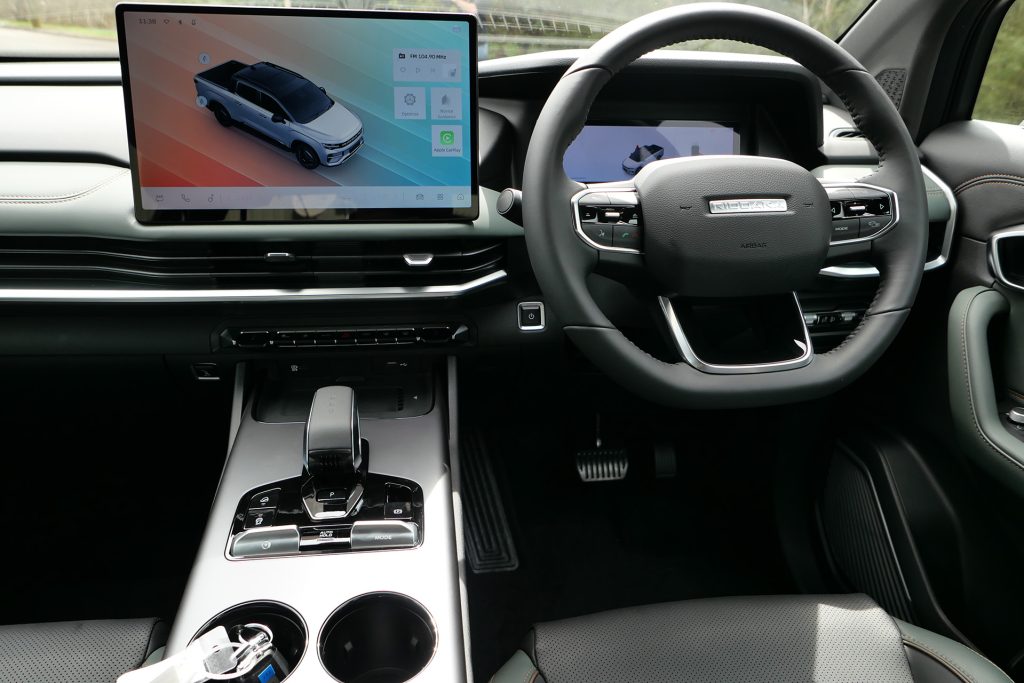
As is the modern way, it is car-like inside, with generous occupant space for five. Its interior is not dissimilar to that of its EX5 and Starray cousins. We like the soft-opening tailgate with its pull out step too. And talk about quiet; no rattly diesel noises here. Those wanting a clean and green ute will eat this up, and BYD Shark 6 has a new rival on its hands. It hasn’t the range of that truck but it’s significantly lighter at 2200kg. And it goes right to the heart of Shark 6 territory with its $69,990 pricing.
Inspirational?
Out of the Riddara and into another EV next, Geely’s EX5 Inspire. The Geely launch drive for the media was essentially a quick jaunt to Lake Karapiro down the Expressway from Auckland, stopping to be wowed by the Riddara RD6, and then another SH1 stint onwards to Taupo. But the EX5 I drove had 235km of charge remaining, 55 per cent, so I took a more inland route. Lonely, winding, lightly trafficked roads. We had to drive like we had an egg under our right foot to conserve charge initially but still made it with 16 per cent or 70km remaining.
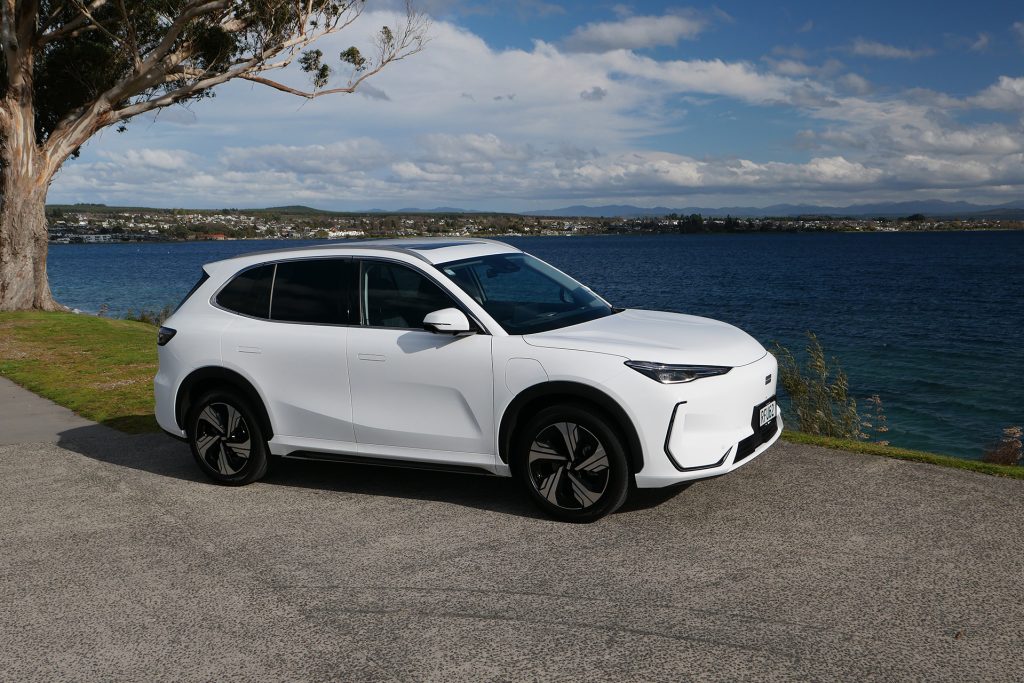
This goes really well. Yes, there are a few annoying warning chimes, like for overspeed and distraction but in the scheme of things, this is a serious contender in the $50k medium electric SUV sector. It’s more a crossover really, as it’s front drive only.
This has great performance. It runs a 160kW/320Nm motor, with enough squirt to reach 100 in 6.9sec. So it is faster than its like-priced rivals. We found overall energy use on our rural run of 17kWh per 100km, over topsy-turvy roads. Its 60kWh LFP battery is good for a claimed 410-430km, somewhat less on the open road, around 300km. And a 30 to 80 per cent DC fast charge is said to take around 20 min.
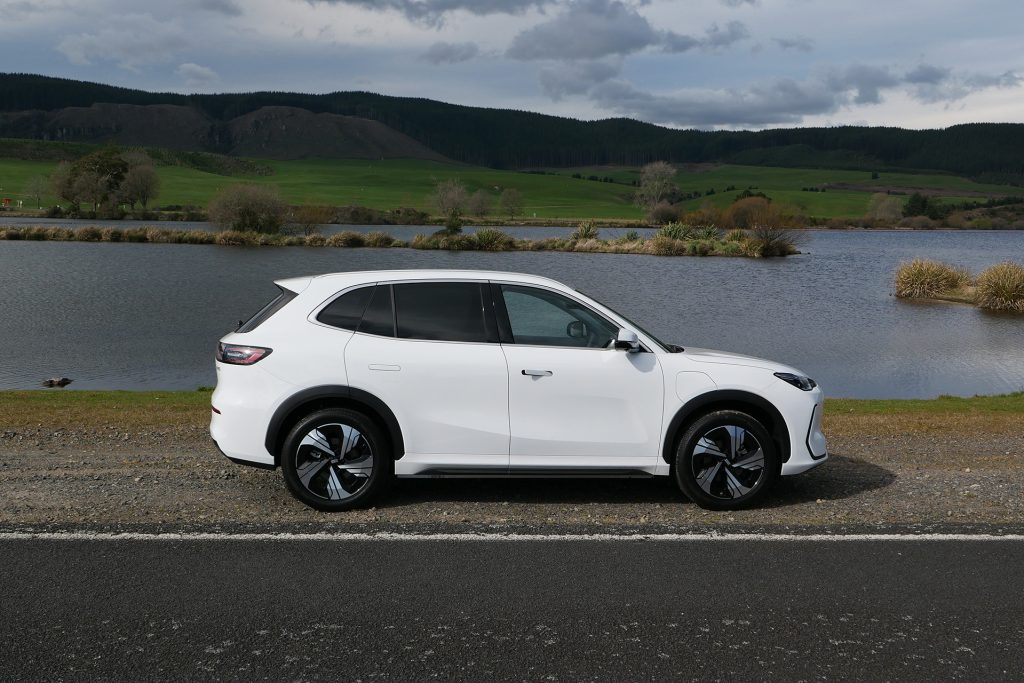
The ‘Complete’ model is the entry point, for it misses out on a panoramic sunroof, massaging front seats, and a 16-speaker sound system of the Inspire model. But it does get a 15.4-inch central touchscreen, self-unlocking, and powered and heated front seats. Most everyone so far has gone Inspire. Both models are backed by a seven-year, unlimited km warranty (eight years for the battery). The Complete variant kicks off at $49,990 while the Inspire is $53,990, slightly less than initial pricing.
Star Power
And so to the model that Nordeast reckons is the logical successor to the self-charging hybrids currently popular in New Zealand. They say that because the Starray EM-i, a PHEV, evidently self-charges. Hmm, well, yes but for us it only started adding kays when the engine was under a low load. And secondly, you shouldn’t anyway, as fuel economy blows out. Just wait until you can recharge the 18.5kWh battery pack at home.
On the forced recharge setting we saw a worst figure of 8.4L/100km. But with a replete battery, on the Expressway, fuel use dropped as low as 1.7L/100km (claimed combined figure of 2.4). Owners who are seriously into their electrification will plug in and treat it as an EV Monday to Friday with its 83km of range and head away for the weekend knowing it has overall range of almost 950km thanks to its ICE side of things and a 51L tank.

This super hybrid features a 160kW/262Nm electric motor that spins the front wheels via an e-DHT transmission, while a 73kW/125Nm naturally aspirated four-cylinder petrol engine operates at fixed revs to restore battery charge. It can also chime in with drive power. There’s enough torque to chirp the front wheels at take off. And satisfying performance too. Both this and the Geely EX5 have an odd quick where they slow down for even the gentlest of corners when set on adaptive cruise. Just like some Mercedes vehicles then. While there’s an OTA software fix coming for this, we found just adding a little gas sorted the issue fine.
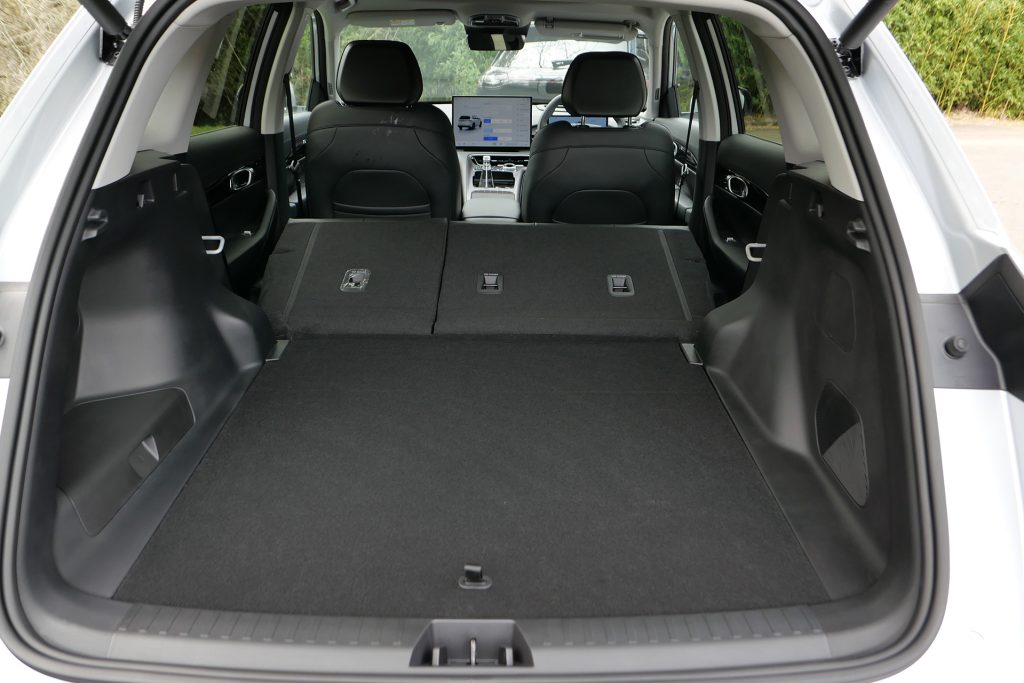
In terms of ride and handling, the Starray genuinely impressed through saturated tricky roads, holding on grimly and displaying good balance. Push too hard and there’s a predictable widening of the line. On the high regen setting, there’s appropriate retardation for most corners, and on the occasions when you need extra brake these are exceptionally good, with more feel than most mixed brake set-ups. The ride is a touch firmer in the Starray, the pay off being a little extra control in corners. It’s fun to helm, and the well shaped, well padded seats held up fine over a four-hour ramble from Taupo to Auckland via an indirect route.

As to how it goes in EV mode only, we didn’t get a chance but with a decent output motor it should be fine, especially as it only weighs around 1700kg. That’s similar overall to the EX5. And on that, when you put this pair together, in profile they’re clearly twinned, despite the Starray being a touch longer. It also has a tich more boot space quoted at 428L with the floor on the high setting, 528L if lowered. EX5 has 410L. There’s evidently 2060L after split folding versus 1877L for the EX5.
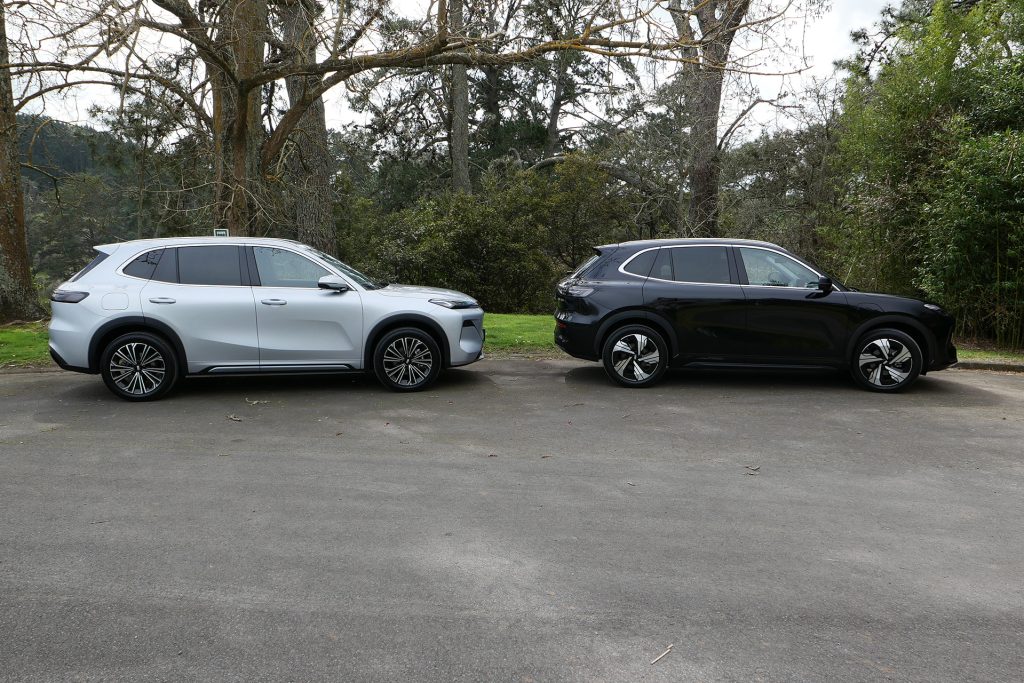
Inside the cabin, you’re hard pressed to tell the difference between the two. Both have ample room in the rear seat, enhanced by flat floors. Seats in each are extremely well padded and formed, though have no lumbar adjustability. Noise levels in both are grand too. You don’t often hear the engine running in Starray. Given a serve the PHEV isn’t quite as quick as the EX5, its time to 100 rated at eight sec. However, you don’t pay as much for it either.
This PHEV costs right in the middle of ICE power medium SUVs, kicking off at $45,990 for the Complete and $49,490 for the Inspire which adds a panoramic sunroof, 19-inch alloys, ventilated front seats with driver memory, wireless charging, an electric tailgate, head-up display and premium 16-speaker audio.
As an incentive, both vehicles come with a three-year free service plan, 15,000km of RUCs and no charge for premium paint (which is anything other than white).
The vast majority buying EX5 opted for Inspire so we’d expect the same for Starray. They’re all on sale now with first deliveries of Starray in September and Riddara coming in early November.


